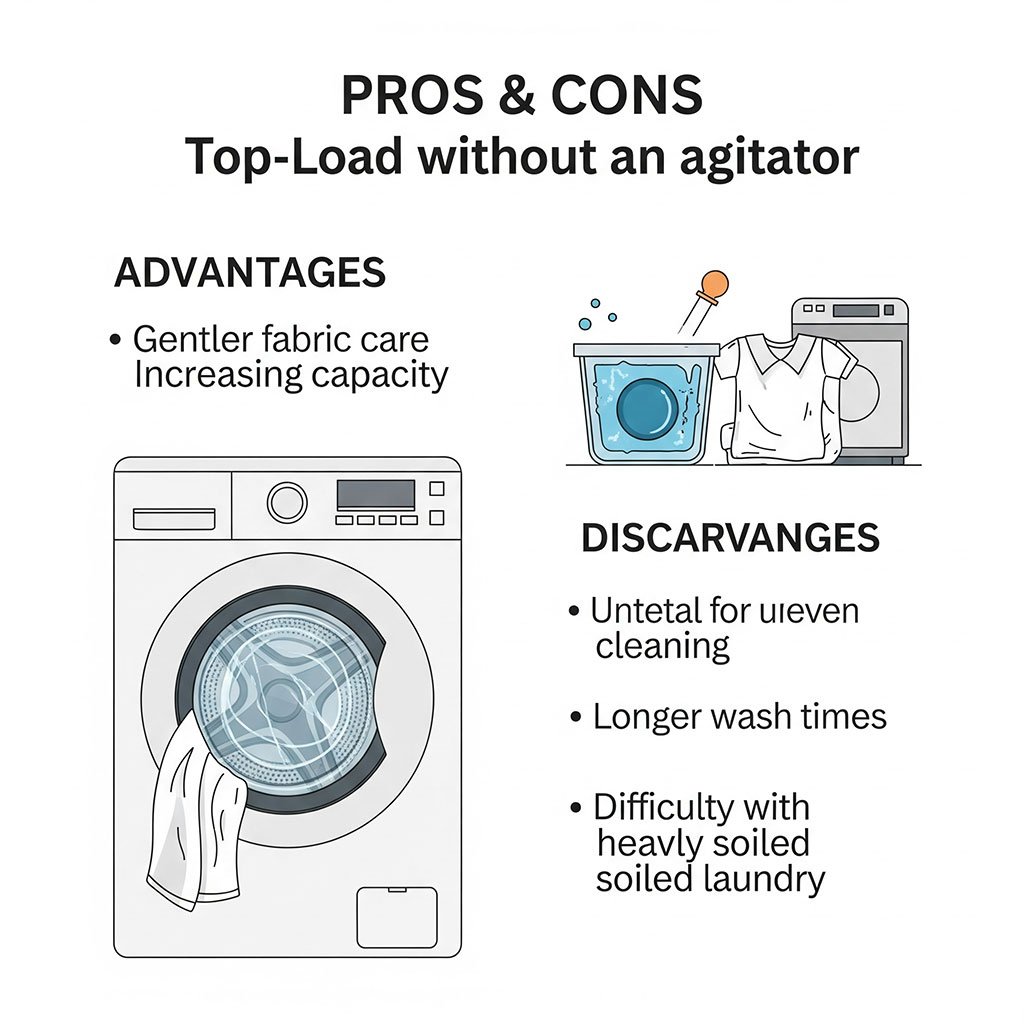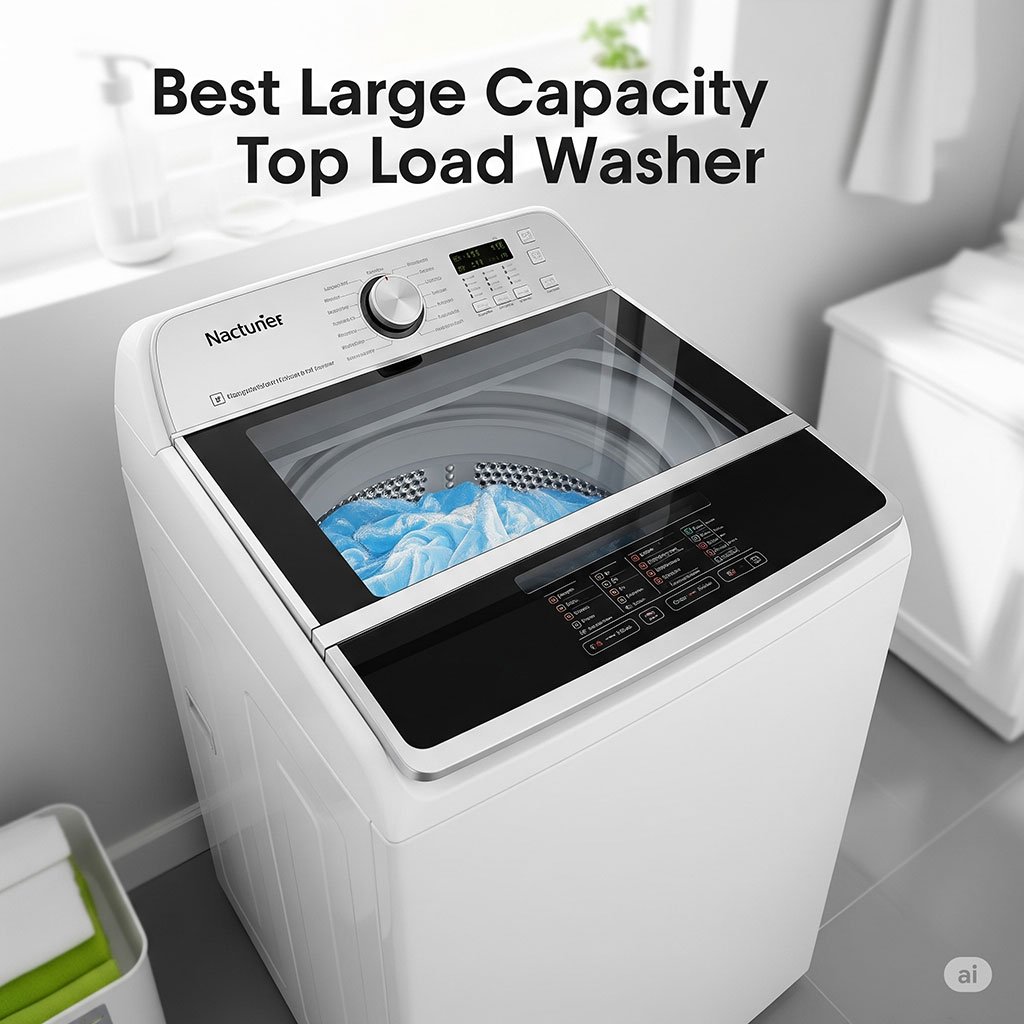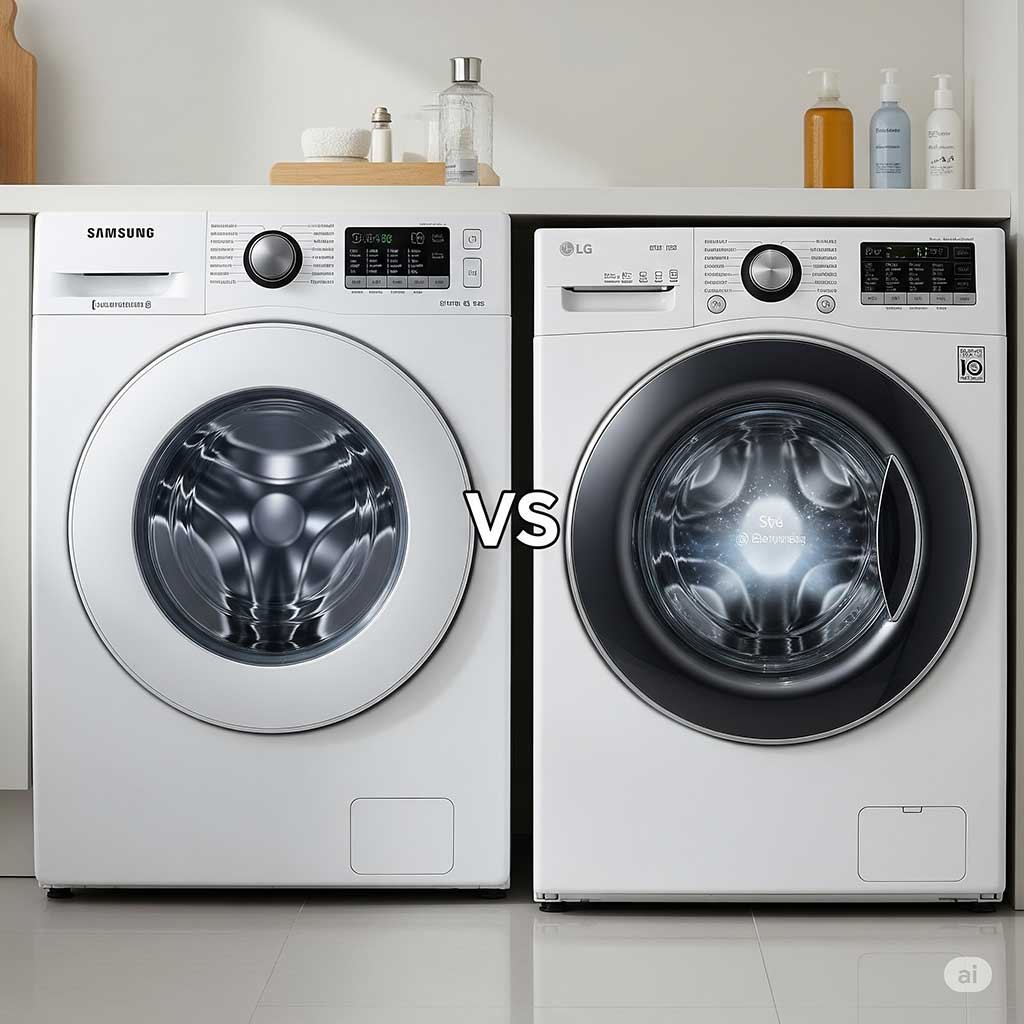An integrated washing machine cannot be used as a freestanding one due to key design differences, capacity variations, and performance discrepancies. While both types of machines serve the same purpose, the integrated model is specifically designed to be installed within a cabinet or between cabinets, whereas a freestanding machine is stand-alone.

Credit: kitchinsider.com
Comparison Chart: Integrated Vs. Freestanding Washing Machine
Feature | Integrated Washing Machine | Freestanding Washing Machine |
|---|---|---|
Appearance | Seamlessly blends into kitchen cabinetry, creating a sleek and cohesive look. Often hidden behind a cabinet door, providing a streamlined aesthetic. | Standalone design, visible and often a feature of the laundry area. Available in various colors and finishes, adding a design element to the space. |
Installation Flexibility | Requires specific cabinetry or built-in space, limiting placement options. Typically installed during kitchen renovation or construction. | Offers flexibility in placement, can be installed anywhere with access to plumbing and electricity. Suitable for both kitchen and laundry room setups. |
Price Range | Tends to be more expensive due to the integration and customization required. Higher upfront cost often associated with kitchen remodeling projects. | Generally more affordable upfront cost compared to integrated models. Offers a range of price points depending on brand, features, and capacity. May incur additional costs for delivery and installation. |
Space Utilization | Optimizes space in a compact kitchen layout by utilizing existing cabinetry. Ideal for smaller kitchens where space is at a premium. | Requires dedicated floor space in the laundry area or kitchen. May not be suitable for tight or confined spaces. Offers accessibility for maintenance and repairs without affecting surrounding cabinetry. |
Resale Value | May enhance the overall value of the kitchen and home, especially in higher-end properties where integrated appliances are expected. | Less impact on resale value compared to integrated models. Still adds value to the home but may not command as high a premium in the real estate market. |
Maintenance and Repairs | Access to components may be more challenging, requiring professional assistance for maintenance and repairs. | Easier access to internal components facilitates DIY maintenance and repairs. Service technicians can access the machine without dismantling cabinetry, reducing labor costs. |
Customization Options | Limited options for customization once installed, as it is integrated into cabinetry design. | Offers flexibility in upgrading or replacing the washing machine without impacting surrounding cabinetry. Allows for easy customization with accessories like storage pedestals or stacking kits. |
Market Availability | Less common compared to freestanding models, may have fewer options and brands available. | Widely available from various manufacturers and retailers, offering a diverse range of sizes, capacities, and features to suit different preferences and budgets. |
Portability | Not portable, as it is fixed within cabinetry and connected to plumbing and electrical systems. | Portable and can be relocated if needed, making it suitable for renters or homeowners who may move frequently. |
Noise Level | May offer quieter operation due to integration with cabinetry, which can help minimize noise transmission. | Noise level varies depending on brand and model, with some offering noise reduction features but may be louder compared to integrated models. |
Key Differences
To make the perfect decision, we have analyzed the key differences of integrated vs. freestanding washing machines. Check the details below-
Design Variations
Integrated washing machines are built to seamlessly blend into your kitchen cabinetry, offering a cohesive look. On the other hand, freestanding washing machines stand alone and can be easily moved to different locations.
Capacity And Performance
Integrated washing machines typically have smaller capacities compared to freestanding models, making them more suitable for compact spaces. However, freestanding washing machines often offer superior performance and advanced features.
Pros And Cons
When deciding between an integrated and freestanding washing machine, consider the pros and cons of each. Integrated machines offer seamless design and space optimization, while freestanding options are easier to install and more flexible for moving. Integrated comes with a sleek look and saves space while freestanding offers easier installation and mobility.
Integrated Washing Machine
If you’re considering purchasing a new washing machine, one key decision you’ll need to make is whether to go for an integrated or freestanding model. Each option has its own set of pros and cons to consider. Let’s start by exploring the pros and cons of an integrated washing machine.
Pros
- Seamless Integration: One of the main advantages of an integrated washing machine is that it can be seamlessly integrated into your kitchen cabinetry, creating a sleek and unified look.
- Space-Saving: Integrated washing machines are designed to fit between cabinets or a cabinet and an end panel, making them an ideal choice for smaller kitchens with limited space.
- Aesthetically Pleasing: Since the integrated washing machine is hidden behind a cabinet door, it doesn’t disrupt the overall design and aesthetics of your kitchen.
- Customizable: With an integrated washing machine, you can choose to match the cabinet door to the rest of your kitchen, allowing for a seamless and cohesive appearance.
Cons
- Higher Cost: Integrated washing machines tend to be more expensive compared to freestanding ones, mainly due to the specialized fitting requirements and customizability.
- Lower Capacity: Integrated washing machines often have a lower capacity compared to freestanding models. This means you may need to do more frequent loads if you have a large household or heavy laundry needs.
- Less Mobility: Unlike freestanding washing machines, integrated models are not easy to move around. If you plan to relocate or rearrange your kitchen in the future, it could be more challenging to adjust the placement of your integrated washing machine.
- Installation Complexity: Installing an integrated washing machine requires precise measurements and fitting, as well as potentially dismantling or modifying cabinets. This can make the installation process more complex and time-consuming compared to freestanding models.
Freestanding Washing Machine
Pros
- Flexibility: One major advantage of freestanding washing machines is their flexibility. They can be placed anywhere in your home without the need for specific fitting requirements or modifications.
- More Capacity Options: Freestanding washing machines often come in a wide range of sizes and capacities, allowing you to choose the one that best suits your laundry needs.
- Easy to Install: Installing a freestanding washing machine is generally easier and less time-consuming compared to an integrated model. No modifications or specialized fitting is required.
- Affordability: Freestanding washing machines are usually more budget-friendly compared to integrated models, making them a popular choice for cost-conscious consumers.
Cons
- Visible Appearance: Unlike integrated models, freestanding washing machines are visible and may not blend seamlessly with the rest of your kitchen or living space.
- Less Aesthetically Pleasing: The design of freestanding washing machines can sometimes be seen as less appealing, as they do not offer the same level of integration and customization as their integrated counterparts.
- Takes Up Floor Space: Freestanding washing machines occupy floor space and may not be suitable for smaller kitchens or homes where space is limited.
Now that you’re aware of the pros and cons of both integrated and freestanding washing machines, you can make an informed decision based on your specific needs and preferences. Consider factors such as budget, kitchen design, available space, and desired capacity to choose the option that best suits your requirements.

Credit: kitchinsider.com
Installation Challenges
When it comes to choosing between an integrated or freestanding washing machine, installation challenges are one of the key factors to consider. Each option presents its own set of difficulties and considerations that need to be understood before making a decision. In this section, we will explore the installation challenges associated with both integrated and freestanding washing machines.
Integration Process
The integration process of an integrated washing machine can be quite complex and time-consuming. Unlike freestanding machines, integrated ones require the fitting of a cupboard or dismantling of an existing one to accommodate the washing machine. This means that not only does the sizing have to be exact, but special attention must be given to ensure the machine is properly installed within the cabinetry.
Sizing Constraints
Sizing constraints are another crucial aspect to consider when deciding between integrated and freestanding washing machines. Integrated machines are designed to fit between cabinets or a cabinet and an end panel. This means that the available space in your kitchen or laundry room needs to be carefully measured to ensure that the integrated washing machine will fit seamlessly into the designated area.
On the other hand, freestanding washing machines do not have the same sizing constraints. They can be placed anywhere as long as there is access to water and electricity. This flexibility in placement can be particularly advantageous for those with limited space or for those who may want the option to relocate the washing machine in the future.
Pro Tip: Before purchasing an integrated or freestanding washing machine, measure the space carefully to ensure the best fit for your needs.
Longevity And Maintenance
For longevity and maintenance considerations, integrated washing machines offer a seamless look and are protected from moving damage due to their fixed cabinet installation. Freestanding models provide easier access for maintenance tasks, but may require more frequent cleaning due to exposed sides.
Lifespan Of Integrated Washing Machine
An integrated washing machine typically lasts around 10-15 years, making it a durable investment.
Maintenance Comparison
Integrated washing machines require professional installation and are harder to fit due to specific sizing requirements.
- Regular maintenance is essential to ensure longevity.
- Integrated models need careful handling during installation.
- Freestanding washers are easier to install and maintain.
Integrated machines must be handled by professionals for upkeep to maintain performance.
Aesthetics And Functionality
Aesthetics and functionality play a crucial role in the decision-making process when it comes to choosing between integrated and freestanding washing machines. These two factors not only affect the overall look of the laundry area but also impact the user’s experience. Let’s delve deeper into how aesthetics and functionality differ between integrated and freestanding washing machines.
Aesthetic Appeal
When considering the visual appeal of a washing machine, integrated models have a distinct advantage. Unlike freestanding machines, integrated washing machines are designed to seamlessly blend into the kitchen or laundry area by integrating with cabinetry and countertops. This integration creates a cohesive and streamlined look, often preferred by homeowners who value a cohesive and modern aesthetic.
Functional Options
From a functional standpoint, both integrated and freestanding washing machines offer distinct benefits. Freestanding machines provide flexibility in terms of placement within the space, allowing for easier installation and potential relocation.
On the other hand, integrated models offer a space-saving solution, particularly in smaller kitchens where maximizing available space is essential. Additionally, integrated washing machines can contribute to a clutter-free environment by concealing the appliance behind cabinet doors, providing a seamless, unobtrusive appearance in the living space.
FAQ
What Is The Difference Between An Integrated And Freestanding Washing Machine?
Integrated and freestanding washing machines have key design differences. While they perform the same job, an integrated machine can’t be used as a freestanding one and vice versa due to safety reasons. Additionally, there are differences in capacity and performance to consider.
Can You Use An Integrated Washing Machine As A Freestanding One?
An integrated washing machine cannot be safely used as a freestanding one due to key design differences. They have different capacities and performance levels.
How Long Do Integrated Washing Machines Last?
Integrated washing machines typically last for 10-12 years with regular maintenance and proper care.
Is It Hard To Fit An Integrated Washing Machine?
Fitting an integrated washing machine can be challenging due to precise sizing and required cabinet modifications. Only dedicated integrated machines can be used.
Bottom Line
When deciding on a washing machine, the choice between integrated and freestanding models can impact your home’s aesthetics and functionality. Each option has its advantages and drawbacks, so consider your space and needs carefully before making a selection. Find the perfect balance between style and convenience.



